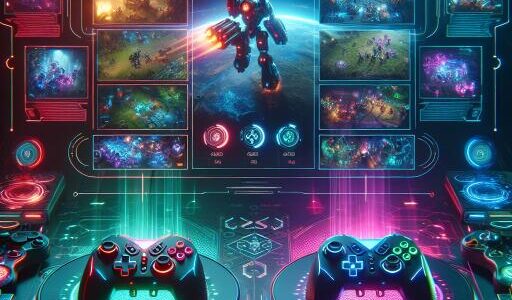Introduction
In the ever-evolving world of personal computing, migrating systems to newer, more powerful hardware configurations can pose both an exciting and daunting challenge. By 2024, the transition from older setups to cutting-edge technology often involves incorporating advanced features such as full-system encryption, UEFI booting, and seamless dual-boot capabilities. This article explores a practical case study of moving from an outdated dual-boot PC, configured with Arch Linux and Windows 10, to a modern machine boasting full-system encryption and dual-boot operation.
The Old vs. The New
The journey begins with the decommissioning of “TehachapiMtn,” a system from 2014 powered by an Intel Core i3-4330 CPU with integrated Intel® HD Graphics 4600. Although functional, it lacked crucial modern elements like system-wide encryption. Data storage relied on a combination of a 1TB WD Blue SATA drive and a supplementary 6TB HGST drive, which served user data separately. Over time, as storage demands increased, a 500G SanDisk SSD was used for Windows, while a Samsung SSD housed Arch Linux files.
Fast forward to 2024, and there’s a shift in gears with the introduction of “Denali,” a powerhouse wrapped around an Intel i7-14700K CPU and armed with the ASUS ROG STRIX Z790-I GAMING WIFI motherboard. Inside an SSUPD Meshroom D case, the system now boasts a 4TB SAMSUNG 990 PRO SSD for both operating systems and respective file systems, each safely enveloped within clickable encryption layers.
State-of-the-Art Configuration
Denali redefines performance with its robust MiniITX form factor. The RTX-4060 GPU, carried over from its predecessor, ensures cutting-edge visual performance. Cooling has evolved too, with the LIAN LI Galahad II LCD 280mm Liquid Cooler managing CPU temperatures.
This new setup embraces the NVME drive, featuring distinct partitions: a 1.44TB encrypted VeraCrypt Windows system partition, and a 2.2TB LUKS2 encrypted Arch Linux environment. The transition also involves significant upgrades, such as the incorporation of a 9TB encrypted Win-Data partition, shared seamlessly between both operating systems, allowing easy data access regardless of boot mode.
Boot Management Revisited
Previously reliant on TeraByte Unlimited’s BootIt Bare Metal, the migration involves upgrading to BootIt®UEFI to harness the benefits of UEFI booting. With Secure Boot enabled, Linux’s root filesystem becomes accessible via a boot PIN in Denali, deviating from the strictly MBR operation of TehachapiMtn.
On the Arch Linux front, Denali swings to a btrfs setup, utilizing multiple subvolumes for efficient snapshot management via Snapper. This shift also introduces unified kernel images (UKIs) directly booted by BootItUEFI, streamlining the boot process and eliminating the need for intermediate boot loaders.
Advanced Encryption Practices
A standout feature of Denali includes the advanced encryption measures applied across its data drives. Windows on Denali employs VeraCrypt system encryption, extending it to its shared data drive for fortified protection at boot. Unlike the past setup which contained standalone pagefiles on separate drives, Denali allows Windows to autonomously manage these, circumventing known encryption hiccups encountered during migration.
The Migration Process
This upgrade involved transferring the TehachapiMtn’s Windows 10 system onto Denali hardware, followed by a refined transition to Windows 11. Key tools such as TeraByte’s Image for Linux facilitated the cloning process, capturing system configurations and replacing outdated drivers.
Due to the iterative improvements discovered throughout this migration, perfection wasn’t achieved in one stride. Through diligent research and real-world application, various intricacies of the procedure unfolded, resulting in a seamless migration strategy that captured critical nuances often omitted in standard resources.
Conclusion
Enhancing computing capabilities by migrating to state-of-the-art technology like Denali marks a significant leap forward in dual-boot configurations, system performance, and data security. Such transitions underline the importance of embracing modern features like UEFI booting, complete disk encryption, and autonomous system resource management, setting the stage for optimal performance and security in the tech world of tomorrow.









